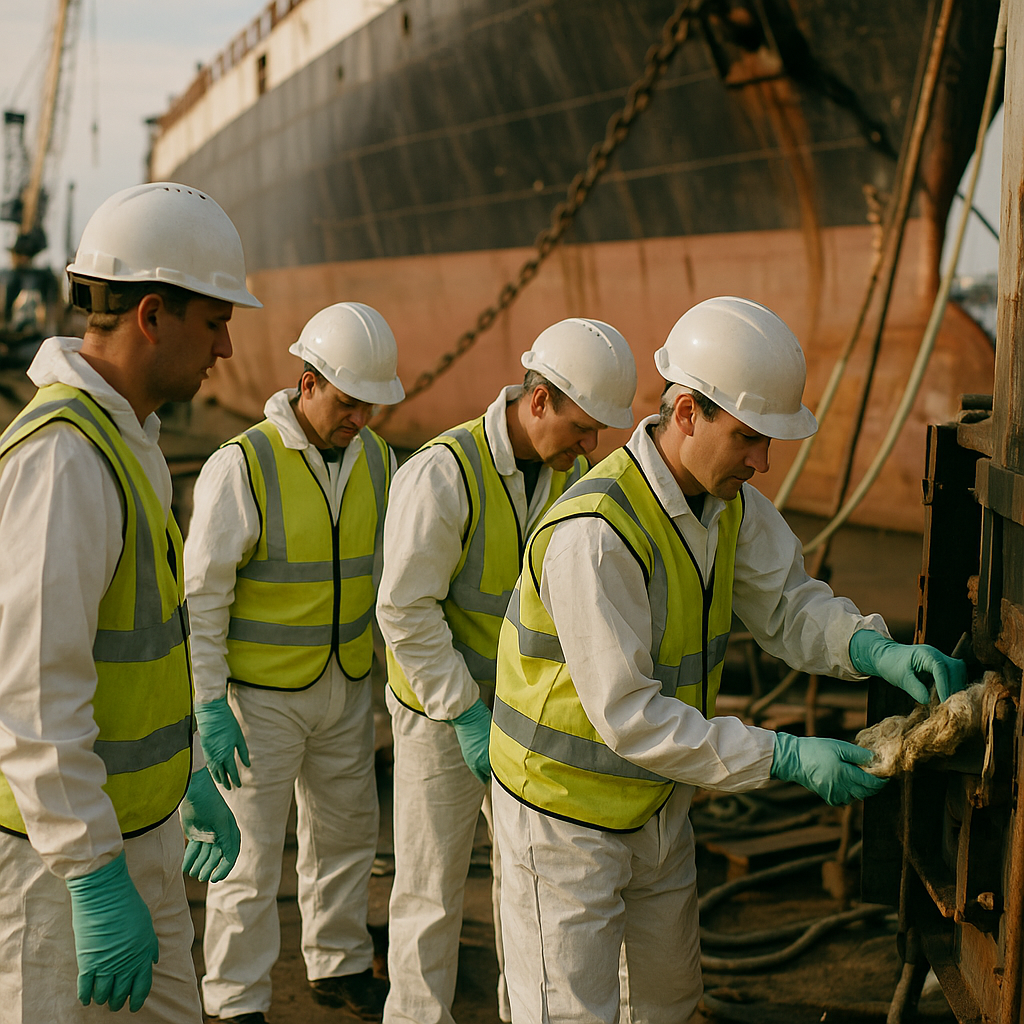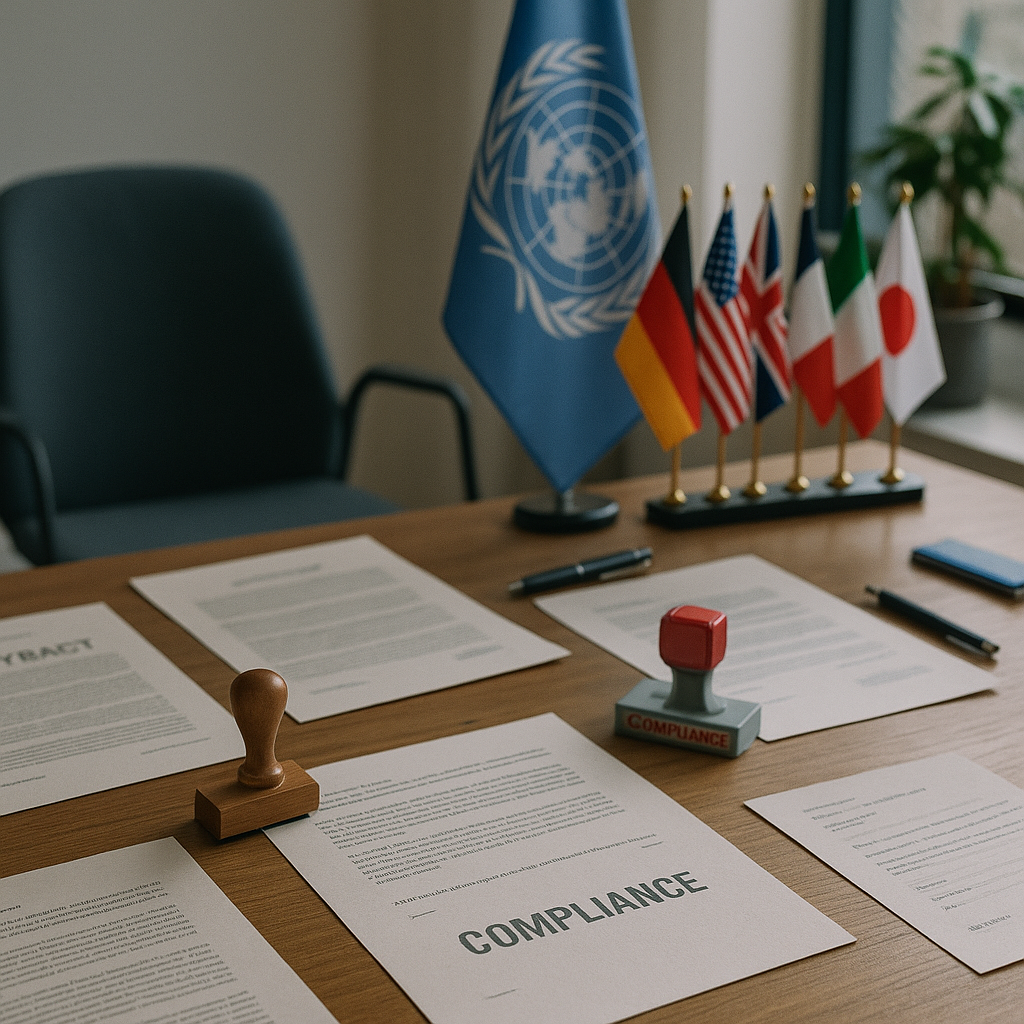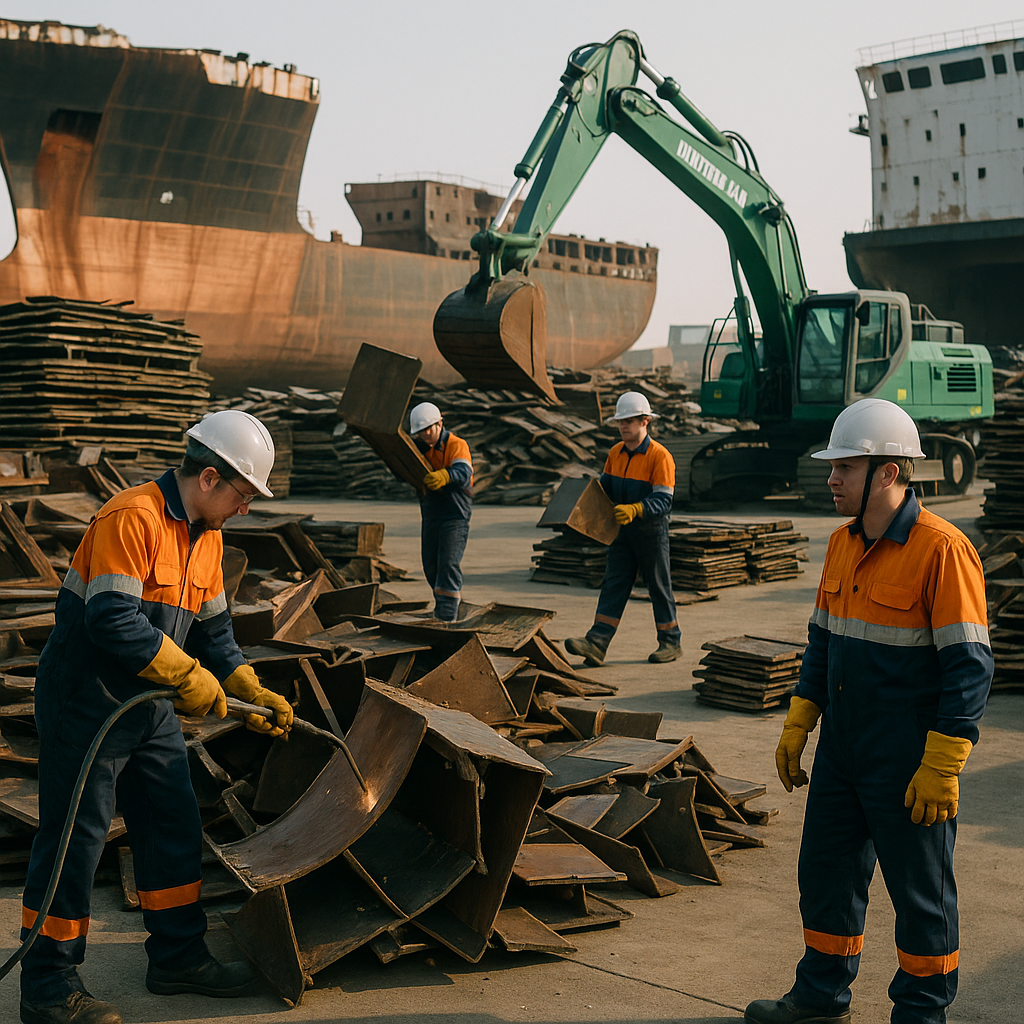5901 Botham Jean Blvd, Dallas, TX 75215
Shipyard Recycling: A Step-by-Step Guide to Preparation & Dismantling
November 8, 2025Nearly every component of a large ocean-going vessel can be recycled and reused. When ships reach the end of their 25 to 30-year lifespan, they undergo a comprehensive recycling process, recovering approximately 95% of their materials. This systematic approach transforms what might otherwise be maritime waste into valuable raw materials for new construction projects.
The shipyard recycling and dismantling process, known as ship breaking, involves the complete or partial dismantling of end-of-life vessels at specialized facilities. According to the Hong Kong Convention, ship recycling encompasses all associated operations, including mooring, dismantling, recovery of materials for reprocessing, and careful management of hazardous substances. The entire operation takes between four months and one year to complete, depending on the vessel’s size and complexity.
How Does The Dismantling Process Differ Between Regions?

Ship dismantling methods vary significantly across regions, reflecting differences in local infrastructure, labor costs, and regulatory environments. Understanding these variations helps municipalities and businesses make informed decisions about responsible vessel disposal.
Developed countries generally utilize advanced dry dock or pier-based dismantling systems, which contain all operations within controlled environments. This approach follows strict technical guidelines established by frameworks like the Basel Convention.
Dry dock facilities achieve high efficiency, recovering up to 98% of vessel materials for recycling. Advanced equipment systematically breaks down ship components while preventing environmental contamination.
South Asian ship breaking yards operate under different principles. The prevalent method, beaching, involves running vessels aground during high tide, requiring skilled captains to navigate massive ships onto sloping beaches.
Once beached, dismantling is labor-intensive. Workers manually cut ships into sections using gas torches and basic tools.
The beaching method offers certain economic benefits for developing regions. Lower labor costs make manual dismantling financially feasible, and local demand for recycled steel creates ready markets for recovered materials.
However, safety standards differ markedly between regions. Developed country facilities maintain strict worker protection protocols, while South Asian operations often lack adequate safety equipment and training programs.
Environmental controls also differ significantly. Developed nations require comprehensive hazardous material management before dismantling, while many South Asian facilities handle these materials with minimal containment measures.
Regulatory oversight is another key distinction. Developed countries enforce stringent compliance with international conventions, such as the Basel Convention, which mandates proper waste treatment and environmental protection measures.
The labor force composition reflects these operational differences. Developed country yards rely on specialized technicians operating heavy machinery, while South Asian facilities employ large numbers of manual workers, often with limited training.
Processing times also vary. Dry dock operations can complete dismantling more quickly due to mechanization, while beaching methods typically require longer periods but can handle multiple vessels simultaneously on extensive coastlines.
What Preparatory Steps are Taken Before a Ship is Dismantled?

Ship dismantling requires extensive preparation before any cutting or breakdown can begin. These steps protect workers, communities, and the environment while maximizing material recovery.
Regulatory Clearance and Inspections
Regulatory clearance is the first critical step. Authorities from pollution control agencies, customs departments, and maritime bodies conduct inspections of vessels destined for recycling. These inspections identify potential hazards and ensure compliance with ship breaking regulations.
The inspection process involves documenting the vessel’s condition and contents. Officials assess structural integrity, identify hazardous materials, and verify that permits are in place before dismantling can proceed.
Complete Fluid Drainage
Draining fluids is one of the most hazardous yet essential tasks. All substances must be removed from vessel systems to prevent environmental contamination and eliminate explosion risks during cutting.
The drainage process targets multiple fluid types. Fuel tanks require evacuation of diesel, marine gas oil, and any bunker fuel. Hydraulic systems need flushing to remove fluids that power steering, cargo handling, and deck machinery.
Coolant systems in engine rooms and refrigeration units demand careful attention during drainage. Lubricating oils from engines, generators, and systems must be extracted and contained. Even firefighting liquids and bilge water require removal through specialized pumping.
Recovery of Reusable Components
Salvage teams remove valuable items before dismantling begins. These operations, often performed by ‘scrappers,’ focus on components with resale value in secondary markets.
Electronics, including navigation systems, communication devices, and hardware, are extracted for reuse. Furniture, galley equipment, and fixtures find new applications. Machinery components such as pumps, generators, and marine equipment retain value after refurbishment.
Non-ferrous metals receive particular attention. Copper wiring, brass fittings, and aluminum components command higher prices than steel scrap. Careful removal preserves these materials’ integrity and maximizes their recycling potential.
Hazardous Material Inventory and Containment
Developed countries mandate comprehensive inventory compilation of dangerous substances before cutting begins. This process identifies, documents, and plans for the safe removal of all hazardous materials present.
Asbestos insulation around pipes, in engine rooms, and older vessels requires specialized handling. Lead-based paints on hull surfaces and structures need assessment for safe removal. Polychlorinated biphenyls in electrical equipment demand attention due to their environmental impact.
The inventory process also addresses radioactive materials. Smoke detectors, navigation equipment, and certain gauges can contain radioactive substances requiring specialized disposal. Documentation ensures proper handling throughout dismantling.
Ventilation preparation accompanies hazardous material assessment. Workers bore holes throughout the vessel to establish air circulation and extract dangerous vapors before cutting. This system reduces toxic exposure and prevents flammable gas accumulation that could ignite during operations.
What Are the Main Dangers Associated With Ship Breaking?

Ship breaking ranks among the world’s most dangerous occupations according to the International Labour Organization. Workers face unacceptably high fatality and injury rates due to inadequate safety standards across major shipbreaking regions. In Bangladesh alone, more than 400 workers have died, and 6,000 have sustained serious injuries over the past two decades. A Taiwan study tracking 4,427 shipbreaking workers found 940 cancer-related deaths between 1985 and 2008.
Physical dangers pose immediate life-threatening risks to workers. Explosions from gas cylinders and trapped petroleum gases regularly cause burns and fatalities. Workers face crushing injuries from falling steel plates that can weigh several tons and drop from heights of up to 70 meters. Suffocation occurs when workers enter confined ship chambers filled with carbon dioxide and other toxic gases. Electric shocks, fires, and structural collapses add further hazards during the dismantling process.
Toxic material exposure leads to severe long-term health consequences. Each vessel contains approximately seven tons of asbestos that workers remove by hand, leading to mesothelioma and other cancers. Heavy metals such as lead, mercury, cadmium, and chromium contaminate work areas and enter workers’ respiratory systems. Polychlorinated biphenyls, polycyclic aromatic hydrocarbons, and tributyltin compounds heighten carcinogenic risks. Anti-fouling paints release toxic fumes when heated during torch-cutting operations.
Environmental contamination extends dangers beyond the immediate workforce. Hazardous materials leak into coastal soil and seawater during the beaching process. Oil residues, metal rust, and chemical runoff pollute surrounding ecosystems and affect local fishing communities. Air quality deteriorates significantly around shipbreaking sites, with studies showing carcinogenic risk limits exceeded at most measurement locations. Ballast water releases can potentially introduce invasive species that threaten marine biodiversity.
Inadequate workplace safety measures amplify these risks substantially. Most workers operate without essential personal protective equipment like respirators, gloves, and helmets. Training programs are often insufficient or nonexistent in many facilities. Workers frequently perform hazardous tasks in extreme heat without adequate hydration or rest periods. The lack of proper medical facilities nearby delays treatment for injuries and toxic exposure incidents.
What International Regulations Govern Ship Recycling?

The Basel Convention on the Control of Transboundary Movements of Hazardous Wastes serves as the foundation for international ship recycling oversight. Adopted in 1989, this convention specifically addresses the movement of hazardous materials between countries, directly impacting our industry since end-of-life vessels contain substantial amounts of asbestos, heavy metals, and other regulated substances. The Basel Ban Amendment, which entered force in 2019, prohibits the export of hazardous waste from OECD countries to non-OECD nations, fundamentally reshaping global ship recycling trade flows.
The Hong Kong International Convention for Safe and Environmentally Sound Recycling of Ships represents the most comprehensive regulatory framework we operate under today. Developed by the International Maritime Organization in 2009 and entering force on June 26, 2025, this convention establishes mandatory standards for both ship recycling facilities and vessel operators. We must maintain detailed Inventory of Hazardous Materials documentation throughout a ship’s lifecycle and develop vessel-specific Ship Recycling Plans that demonstrate safe handling procedures for each dismantling project.
The European Union Ship Recycling Regulation imposes the most stringent requirements in our industry, applying to all EU-flagged vessels and ships calling at European ports. This regulation, effective since 2018, requires us to demonstrate compliance with higher environmental and worker safety standards than those mandated by the Hong Kong Convention. EU-flagged vessels can only be recycled at facilities appearing on the European Commission’s approved list, creating a separate tier of certified recycling operations with enhanced environmental controls.
These regulatory frameworks work together to create a comprehensive oversight system for hazardous waste management in ship recycling. The EU Waste Shipment Regulation further restricts waste exports to non-OECD countries, requiring prior informed consent procedures and detailed waste tracking documentation. As materials recovery specialists, we must navigate these overlapping jurisdictions while maintaining compliance with each applicable standard, particularly when handling vessels that may fall under multiple regulatory regimes depending on their flag state and operational history.
Conclusion: Moving Towards Safer and More Sustainable Ship Recycling

Ship recycling plays a crucial role in the circular economy by recovering valuable materials like steel and reducing the demand for mining. However, the industry faces significant health, safety, and environmental challenges. Poor working conditions and inadequate hazardous waste management at some facilities underscore the urgent need for comprehensive regulatory oversight. The entry into force of the Hong Kong Convention in June 2025 is a critical step toward establishing global standards to protect both workers and the environment.
As the maritime industry prepares to recycle an estimated 15,000 vessels by 2032, the success of sustainable ship recycling depends on consistent enforcement of international regulations and industry-wide commitment to green recycling practices. The future requires collaboration between shipowners, recycling facilities, and regulatory bodies to ensure that industry standards prioritize worker safety and environmental protection. For organizations seeking responsible recycling solutions that comply with evolving regulations, contact Okon Recycling at 214-717-4083.
